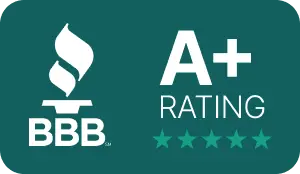The Executor’s Liquidity Dilemma
Serving as personal representative often feels like running a small business—one whose customers (the heirs) want updates, whose vendors (contractors, tax authorities, insurers) want payment, and whose revenues (estate assets) remain locked behind a court docket. Property taxes come due in thirty days, a roof leak needs attention now, and legal fees accrue every time the attorney drafts a motion. Until distribution, you must pay today for obligations that belong to tomorrow’s beneficiaries. Estate-focused financing bridges that gap without touching your personal credit or asking the heirs to front cash.
Three Buckets of Estate Expenses
- Taxes – County tax collectors do not pause billing for probate. Miss a deadline and penalties compound monthly.
- Repairs & Preservation – Insurance companies insist that vacant houses be maintained; deferred maintenance slashes market value on appraisal day.
- Administrative & Legal Fees – Court filing costs, CPA invoices, and attorney retainers rarely align with an estate’s cash position.
Covering these obligations from personal funds risks reimbursement delays—and possible denial if the court deems the outlay non-essential. Estate loans, structured specifically for probate, solve the mismatch.
Mapping Loan Choices to Timing Pressures
When Speed Makes All the Difference
If tax penalties start next week or a burst pipe threatens habitability, timing outweighs every other factor. Fortunately, specialty lenders have refined rapid-funding pathways that approve, document, and wire funds inside seventy-two hours when documentation is in order. The key is a streamlined underwriting stack that focuses on asset value and court authority rather than credit scores and W-2s.
Aligning Loan Tenor with Real Probate Timelines
Underestimating the court calendar can turn an affordable advance into an expensive drag on net proceeds, so begin with a candid projection of full-distribution timing. In uncontested counties, six months is realistic; add ancillary property or creditor disputes and a year is conservative. Matching loan tenor to worst-case duration prevents fee shock and protects you when docket congestion stretches hearings.
Choosing the Right Paperwork—Estate or Inheritance?
Not every heir wants to borrow, yet the roof bill hits all siblings equally when leaks drop mold on hardwood floors. A top-line estate advance draws repayment from the estate before distribution, spreading cost across beneficiaries in direct proportion to their shares. By contrast, an inheritance advance binds only the heir who signs—useful when one sibling needs capital for personal reasons that the others reject. Understanding those legal mechanics preserves family harmony and shields you from accusations of favoritism.
Bridging Interim Obligations Without Long-Term Drag
Some problems—overdue HOA assessments, emergency mold remediation—demand dollars today yet evaporate once property sells. For those scenarios, look to short-course bridge structures such as immediate estate loan options. These offers provide capped fees, no prepayment penalties, and interest that accrues only on funds actually deployed.
A Practical Decision Framework for Busy Executors
Rather than relying on a table, consider these five common scenarios and the corresponding loan fit:
- Impending Tax Deadline: When county taxes or federal estate-tax installments are due in less than 30 days, speed trumps rate. A rapid-funding estate loan—approved in days and collateralized by real property—keeps penalties at bay without draining personal reserves.
- Essential Property Repairs: Think leaking roofs, broken HVAC, or safety hazards that could derail a buyer’s inspection. A draw-based bridge loan lets you borrow in stages, matching contractor invoices and preventing interest from accruing on unused capital.
- Attorney or CPA Retainers Running High: Legal and accounting teams often require replenishment before milestones such as formal inventory filings. A top-line estate advance spreads that burden across all heirs, honoring your fiduciary duty to treat beneficiaries equitably.
- One Heir Needs Early Liquidity: If a sibling requests a partial payout for college tuition or medical bills, isolate the liability with an inheritance advance. That heir receives funds immediately; the others wait for distribution untouched.
- Value-Add Real-Estate Opportunity: A property poised for a major appreciation lift after rehab calls for investment-grade financing. An estate renovation loan—described in Estate Loans for Real-Estate Investment Success—funds upgrades now, then repays from a higher sales price or post-probate refinance.
Negotiating Terms That Protect the Estate
- Non-recourse language – Repayment must flow from estate assets only.
- Flat fee or simple interest – Compounding erodes heir equity on long cases.
- Draw schedules – Borrow against invoices, not the whole commitment.
- Repayment caps – Lock maximum liability even if probate drags.
- Court pre-approval – A signed order up front deters later objections.
Present prospective lenders with an itemized budget—tax estimates, contractor bids, professional retainers—and request side-by-side cost illustrations at six, twelve, and eighteen months. Full transparency accelerates court approval and keeps heirs informed.
Practical Steps to Secure Funding Quickly
- Gather documents early – Letters testamentary, death certificates, preliminary asset inventories.
- Set up an estate bank account – Lenders wire to an account titled in the estate’s name.
- Consult probate counsel – Judges approve faster when attorney declarations spell out necessity and benefit.
- Schedule property inspections promptly – Title and valuation drive underwriting speed.
- Communicate with heirs – Transparent explanations foster unanimous consent and smoother closings.
Decision Matrix: Stress-Test Any Estate-Loan Offer Before You Sign
Before moving forward with financing, put every proposal through a five-step due-diligence screen. The exercise takes an afternoon—and can preserve tens of thousands in heir equity.
-
Urgency vs. Cost Reality Check
- Quantify the cash crunch: itemize tax penalties, contractor late fees, or insurance lapses you will actually incur over the next 60 days.
- Price the loan’s true carry: project interest and fees to the earliest realistic payoff and to a twelve-month “worst case.” Proceed only if the financing still beats the penalty stack.
- Quantify the cash crunch: itemize tax penalties, contractor late fees, or insurance lapses you will actually incur over the next 60 days.
-
Collateral & Liability Alignment Test
- Confirm that only estate assets (not your personal credit) secure the advance.
- Verify the lender’s recourse stops at the probate estate—even if real-estate sale proceeds fall short.
- Confirm that only estate assets (not your personal credit) secure the advance.
-
Timeline Fit Assessment
- Cross-check the loan tenor against the court calendar your attorney provided.
- Build in a three-month buffer for unforeseen objections, title quirks, or docket backlog.
- Cross-check the loan tenor against the court calendar your attorney provided.
-
Market-Quote Comparison
- Solicit at least two competing term sheets. Small differences in origination fees or monthly interest add up quickly on six-figure advances.
- Use written quotes to negotiate caps on draw fees, inspection fees, and legal-review costs.
- Solicit at least two competing term sheets. Small differences in origination fees or monthly interest add up quickly on six-figure advances.
-
Professional & Beneficiary Review
- Run the final term sheet past probate counsel and the estate’s CPA; their letters of support speed court approval.
- Provide heirs a concise memo outlining need, costs, and repayment plan to pre-empt future disputes.
- Run the final term sheet past probate counsel and the estate’s CPA; their letters of support speed court approval.
Bottom line: if an offer survives all five screens—showing clear cost advantage, locked-down liability, and timeline compatibility—it is more than a stop-gap. It is a fiduciary tool that protects asset value, keeps probate on schedule, and preserves peace among beneficiaries without sacrificing your own financial security.
Final Word: Liquidity as a Fiduciary Tool
Executor duty centres on asset preservation and fair distribution. Estate loans, when structured responsibly, transform liquidity from a personal burden into a fiduciary instrument—one that prevents penalty fees, safeguards property value, and even unlocks investment upside. Start with realistic timelines, match loan tenor to probate complexity, and negotiate terms that cap risk. Do so, and you’ll navigate taxes, repairs, and administrative costs without sacrificing the estate’s bottom line—or your peace of mind.








